First day off, and I have a full day planned. A really full day.
Over the past week I had developed a plan of places to go, churches to photograph. As always, there is a risk that many might be closed, but having selected a second half of the list as being made of CCT run churches, and their policy of them being open every day, I was hopeful that I might do well. And as it turned out, managed to see inside seven of the nine. Sounds like something from Star Trek.
Many years ago, Jools and I went to Ayelsford to see the ancient pack bridge, with the village bathed in warm sunlight on the other side of the Medway. Showing how long ago it was, I did not visit the church, AT ALL. Anyway, with that in mind, I had been told by my Kentish church expert friend, John Vigar, that it was well worth seeing inside. And that if locked, the key could be collected from the village post office.
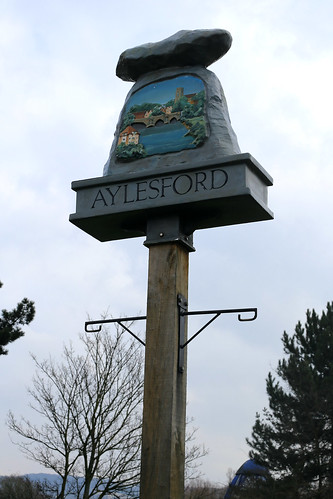 So, at quarter to nine, once I had eaten breakfast and had the second cup of coffee, I set off towards Dover, along the Alkham Valley and then up the M20 past Maidstone to Ayesford. I really did not need the sat nav, but had it on anyway. Radio six played in the background, the usual mix of morning stuff and great tunes.
So, at quarter to nine, once I had eaten breakfast and had the second cup of coffee, I set off towards Dover, along the Alkham Valley and then up the M20 past Maidstone to Ayesford. I really did not need the sat nav, but had it on anyway. Radio six played in the background, the usual mix of morning stuff and great tunes. Aylesford is an ancient village, but being so close to Maidstone, pressure is on for more housing, so there was talk of more new houses yet to be built.
I found a place to park the car, walked up the hill to the church. A good sign is that the gate of the porch was open, so I walk in and find a service under way.
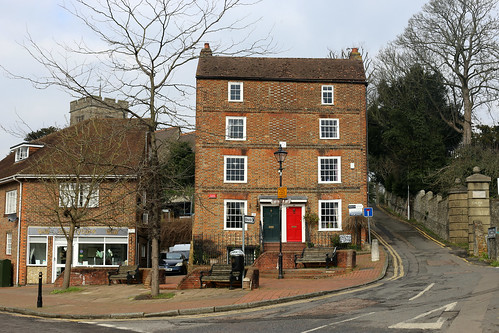 I find out later it wasn't a service, it was a reading, as the parish does not have a vicar at the moment, so prayers were said to guide those in charge to appoint a "good" one.
I find out later it wasn't a service, it was a reading, as the parish does not have a vicar at the moment, so prayers were said to guide those in charge to appoint a "good" one. 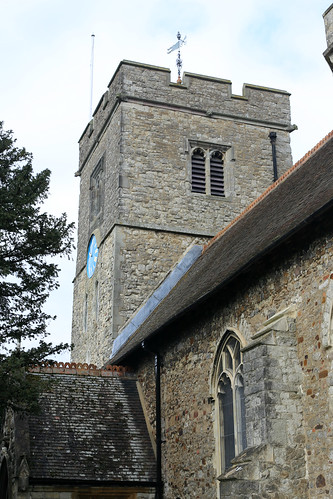 I sat at the back, the first time I have attended a service for many, many years. As it was a reading, there were no hymns, but many prayers said, for the great and good, and for some locals.
I sat at the back, the first time I have attended a service for many, many years. As it was a reading, there were no hymns, but many prayers said, for the great and good, and for some locals. 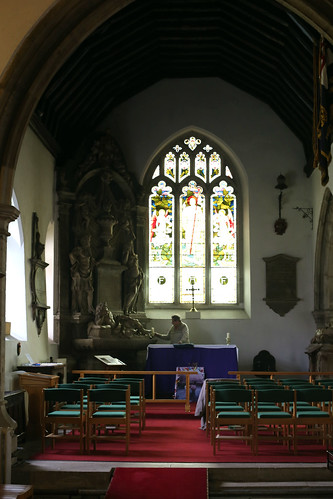 After the service the reader seeked me out, and we spoke, turns out he was just the reader, and not the vicar as I thought, but he was very friendly, but others of the congregation were more wary.
After the service the reader seeked me out, and we spoke, turns out he was just the reader, and not the vicar as I thought, but he was very friendly, but others of the congregation were more wary.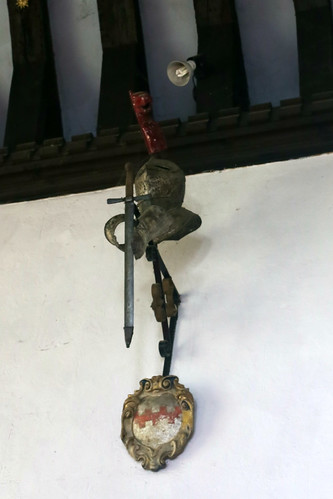 I ran round getting shots whilst they cleared away the items used in the reading, waiting for me to finish. I think I got the shots I wanted, but we shall see.
I ran round getting shots whilst they cleared away the items used in the reading, waiting for me to finish. I think I got the shots I wanted, but we shall see.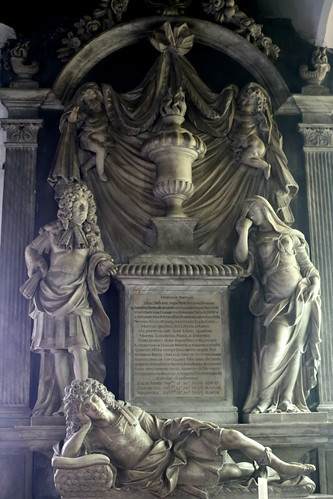 Ss. Peter and Paul, is large, the side chapel is as large as many Kentish parish churches. And the north chapel is dominated by a rather relaxed and well dressed family, who if the reader is right, were the main movers and shakers in bringing William and Mary to Merrie Olde England.
Ss. Peter and Paul, is large, the side chapel is as large as many Kentish parish churches. And the north chapel is dominated by a rather relaxed and well dressed family, who if the reader is right, were the main movers and shakers in bringing William and Mary to Merrie Olde England. It features a recently renovated and brightly pained organ, and on the Chancel roof, gold stars have been painted on the beams. I rush round getting my shots as the small group watching me, all but tapping their fingers on a pew in frustration. Anyway, I get most of what I want, so thank them all again, and am out back in the bright sunshine.
It features a recently renovated and brightly pained organ, and on the Chancel roof, gold stars have been painted on the beams. I rush round getting my shots as the small group watching me, all but tapping their fingers on a pew in frustration. Anyway, I get most of what I want, so thank them all again, and am out back in the bright sunshine.I walk back down to the car, checking my list off in my head. I had planned my trip based on postcodes, as I did not have my co-pilot, Jools, with me. So anyway. Next stop, Birling.
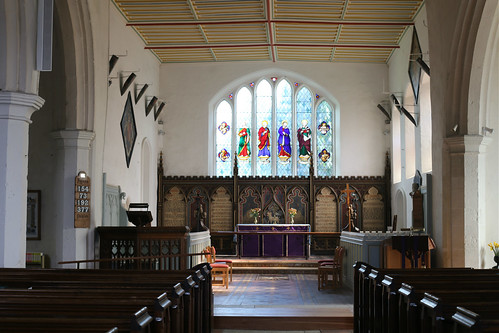 A few minute drive brought me to Birling, a wonderful little village strung out along the main road, overlooked by the church on a small rise. I am past the church and following the lane round before I know it, as see no parking area. So, after turning round, I see there is a gate where I suppose the hearse backs in; well, I take my chances and park there, walk through the gate and into the large graveyard to the church. On the far side there is a set of steep stops leading up from the lych gate, and beyond is the village smithy, all clapboard and tumbledown and wonderful. I try the door, and it is locked. After walking down the steps I find the church notice board, and luckily, a keyholder lives opposite.
A few minute drive brought me to Birling, a wonderful little village strung out along the main road, overlooked by the church on a small rise. I am past the church and following the lane round before I know it, as see no parking area. So, after turning round, I see there is a gate where I suppose the hearse backs in; well, I take my chances and park there, walk through the gate and into the large graveyard to the church. On the far side there is a set of steep stops leading up from the lych gate, and beyond is the village smithy, all clapboard and tumbledown and wonderful. I try the door, and it is locked. After walking down the steps I find the church notice board, and luckily, a keyholder lives opposite. She thinks I am selling something, but soon smiles when I say I want to see inside the church, and points to a huge key hanging on a nail. I take it, with many words of thanks and a wave. Back up the steps, I put the key in the well-worn hole, it turned: I pushed the door and light flooded into the dark interior.
She thinks I am selling something, but soon smiles when I say I want to see inside the church, and points to a huge key hanging on a nail. I take it, with many words of thanks and a wave. Back up the steps, I put the key in the well-worn hole, it turned: I pushed the door and light flooded into the dark interior.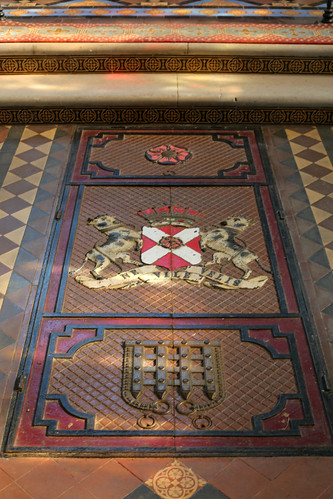 Like a lot of country churches, the local landed gentry had dominated the memorials inside. There appeared to me a metal door before the altar in the floor leading to a family vault below. It was emblazened with coats of arms similar to the ones on the wall, I guess. The shields on the wall seemed to commemorate each member of the high family that had been in which chivalric order, which was nice, if a tad boastful.
Like a lot of country churches, the local landed gentry had dominated the memorials inside. There appeared to me a metal door before the altar in the floor leading to a family vault below. It was emblazened with coats of arms similar to the ones on the wall, I guess. The shields on the wall seemed to commemorate each member of the high family that had been in which chivalric order, which was nice, if a tad boastful. I go round taking my shots, covering all the angles, before switching off the lights, locking the door once again and hanging the key back on the rusty nail. Back in the car I program the postcode for the next church, Paddlesworth, and set off on the short drive there.
I go round taking my shots, covering all the angles, before switching off the lights, locking the door once again and hanging the key back on the rusty nail. Back in the car I program the postcode for the next church, Paddlesworth, and set off on the short drive there.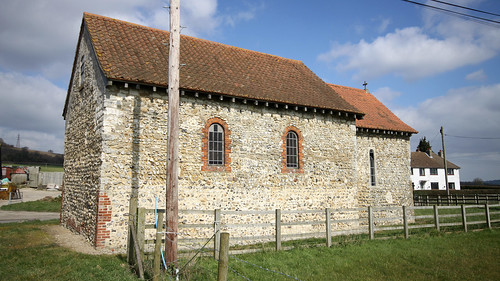 This is the second Paddlesworth in Kent, the other is near Folkestone, and it is an ancient if rustic church, but a delight. This Paddlesworth is just a farm, or a collection of farm buildings, a house and the church. I say church, it is the most rustic of ancient Norman two cell churches, and certainly more rustic than the other one near Folkestone. At least it is under the care of the Church Conservation Trust which should mean it was open. I park the car in the corner of the farmyard and next to the ragstone wall of the church. I go to try the door, and it does not move. Well, it moves but does not open. I stand arund for 5 minutes looking stupid at the passing tractors and forklift trucks hoping someone would stop to help. None does, so I flag down the forklift driver to ask him: he tells me the door is stiff, and shows me how easy the door was. He can't open it either. He advises to go to ask the farmer in the green building behind the barn.
This is the second Paddlesworth in Kent, the other is near Folkestone, and it is an ancient if rustic church, but a delight. This Paddlesworth is just a farm, or a collection of farm buildings, a house and the church. I say church, it is the most rustic of ancient Norman two cell churches, and certainly more rustic than the other one near Folkestone. At least it is under the care of the Church Conservation Trust which should mean it was open. I park the car in the corner of the farmyard and next to the ragstone wall of the church. I go to try the door, and it does not move. Well, it moves but does not open. I stand arund for 5 minutes looking stupid at the passing tractors and forklift trucks hoping someone would stop to help. None does, so I flag down the forklift driver to ask him: he tells me the door is stiff, and shows me how easy the door was. He can't open it either. He advises to go to ask the farmer in the green building behind the barn.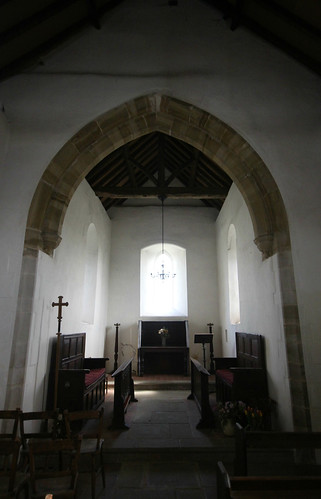 He is crestfallen, as he thinks he has somehow failed in his duty to open the church on time, but he said there had been a group of young lads hanging around at the weekend, so he thought it best to secure it, and forgot to reopen it again. He was as nice as pie, and left me with the door open after he had unlocked it with a key large enough to be the one for the Bank of England.
He is crestfallen, as he thinks he has somehow failed in his duty to open the church on time, but he said there had been a group of young lads hanging around at the weekend, so he thought it best to secure it, and forgot to reopen it again. He was as nice as pie, and left me with the door open after he had unlocked it with a key large enough to be the one for the Bank of England.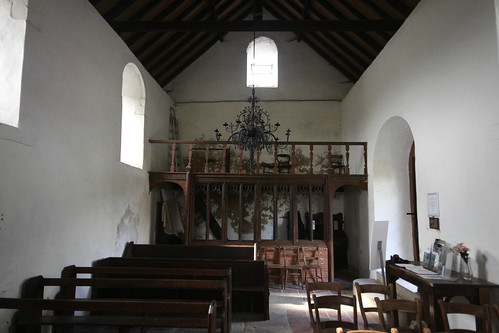 Inside it really very simple, only one memorial, a few simple pews and a small altar. The few windows were plain but with some red at the bottom. I take shots, go outside to take more, and in a few minutes i was done. What an amazing little building, and showing what a lot of the Kentish Norman churches must have looked like soon after they were built and all those side chapels, towers and the such added.
Inside it really very simple, only one memorial, a few simple pews and a small altar. The few windows were plain but with some red at the bottom. I take shots, go outside to take more, and in a few minutes i was done. What an amazing little building, and showing what a lot of the Kentish Norman churches must have looked like soon after they were built and all those side chapels, towers and the such added.Next up is Snodland, a small town, and the church is the other side of a level crossing and beside a paper factory. It was very much as grim as it sounds. Saying that the church itself looked interesting, but it was locked, and there were no details of keyholders or anything else. I take a couple of shots and leave for Halling.
Just a few miles away, Halling was a nicer village, and the church looked more Kentish, but it was locked fast too, and again with no details on hpw to get in. I take more shots, tricky as I looking into the sun. I can always go back.
By this point I was fed up with urban churches being locked, and so decided to skip Cuxton, which I knew was a larger town than either of these. Next on the list is Burham.
The church is down the hill from the modern village, and it had been replaced by a Victorian one, which has since been demolished. St Mary sits at the end of a long single track lane, next to another farm. I know it would be open, and its rural location is confirmed with the rustic feel again inside, with a few pews, an altar and two fonts; both ancient.
I have the place to myself again, I take shots inside and out, and am now on a roll.
I program the next church, this and the remaining two are all around Faversham, which will give me a half hour drive, able to listen to the radio, and as I was going almost right past Stockbury, call in and check on the orchids.
I park in the usual place beside the wood, go for a short walk to the clearing, which had been cleared further, and in the usual place on the far side, the ground is covered in Early Purple rosettes. A few have what might be a spike growing, or they could be more leaves unfolding. Anyway, it is good to be back here at the start of the new season, ready for the approaching madness.
Anyway, I am thirsty, and I know there is a Shepherd Neame pub in the village: it is open, but the card reader is broken, so cash only so make do with a pint of Bishop's Finger and a pack of crisps. All of the major foodgroups.
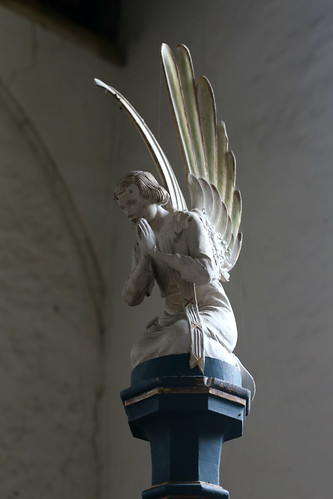 Goodnestone, a different Goodnestone to the one near Deal, is on the eastern side of Faversham, down a long and winding dead end lane, across a farmyard. The church sits in almost splendid isolation. I park on the grass, there is nowhere else, grab the cameras and go inside. Given its location and surroundings, its no surprise that it is rustic. I could hear the wind whistling around the belltower, and inside it was as warm as a fridge. I really wanted just to go home, but there was still two more churches on the list.
Goodnestone, a different Goodnestone to the one near Deal, is on the eastern side of Faversham, down a long and winding dead end lane, across a farmyard. The church sits in almost splendid isolation. I park on the grass, there is nowhere else, grab the cameras and go inside. Given its location and surroundings, its no surprise that it is rustic. I could hear the wind whistling around the belltower, and inside it was as warm as a fridge. I really wanted just to go home, but there was still two more churches on the list. Almost as isolated was Luddenham, also down a long dead end lane which ended at a farm. I park next to some railworker's vans, there was a footpath cum lane leading to a simple church, partly hidden by trees. The wind had grown stronger and colder. Why is it I do this?
Almost as isolated was Luddenham, also down a long dead end lane which ended at a farm. I park next to some railworker's vans, there was a footpath cum lane leading to a simple church, partly hidden by trees. The wind had grown stronger and colder. Why is it I do this?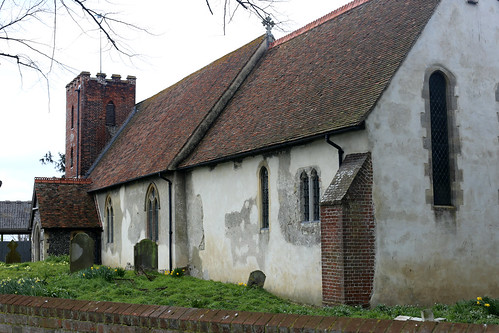 Beciase the buildings are amazing, amazing in some cases that they survived or are still standing. The church is well lit with the light coming in through plain windows, I get the shots of the simple church, nothing fancy, then I consider whether to do the 10th and final one on the list: I realise it is the one designed by AW Pugin, which means I will go.
Beciase the buildings are amazing, amazing in some cases that they survived or are still standing. The church is well lit with the light coming in through plain windows, I get the shots of the simple church, nothing fancy, then I consider whether to do the 10th and final one on the list: I realise it is the one designed by AW Pugin, which means I will go.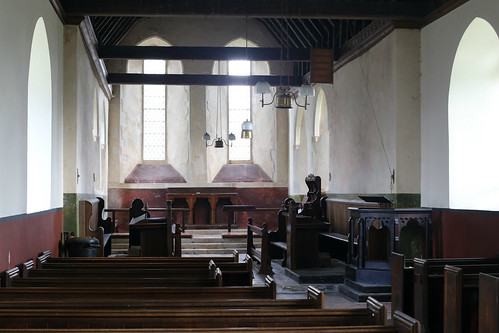 Pugin was a genius, born with a fervour for God and the Catholic church. He saw classical architecture as pagan, and saw Gothic as true Christian; or something like that. So, in is 40-something years he designed and built many churches and other buildings, including a family house and adjoining 'perfect' church in Ramsgate. Kingsdown is the only surviving Anglican church he designed, and it is this church that is my final port of call.
Pugin was a genius, born with a fervour for God and the Catholic church. He saw classical architecture as pagan, and saw Gothic as true Christian; or something like that. So, in is 40-something years he designed and built many churches and other buildings, including a family house and adjoining 'perfect' church in Ramsgate. Kingsdown is the only surviving Anglican church he designed, and it is this church that is my final port of call.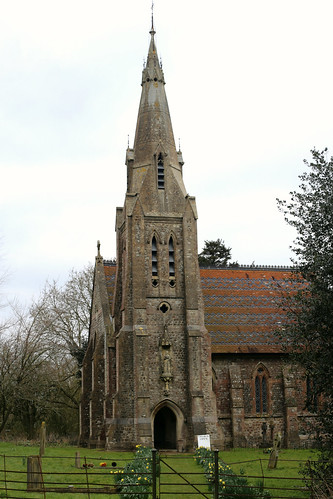 I could see the Gothic spire from across the fields, showing above it's surrounding trees. There is just a large grassed area outside the churchyard, so I leave the car there and look at the gate and path leading to the porch, lined with open daffodils on both sides, all bobbing in the cold breeze. Inside there are all the Gothic touches you would expect, tablets, friezes and windows. All rather marvelous. But, light is fading, or getting flat, I have taken 639 shots in the day, and before I go home I must brave Tesco. It will be nearly 5 before I get home.
I could see the Gothic spire from across the fields, showing above it's surrounding trees. There is just a large grassed area outside the churchyard, so I leave the car there and look at the gate and path leading to the porch, lined with open daffodils on both sides, all bobbing in the cold breeze. Inside there are all the Gothic touches you would expect, tablets, friezes and windows. All rather marvelous. But, light is fading, or getting flat, I have taken 639 shots in the day, and before I go home I must brave Tesco. It will be nearly 5 before I get home.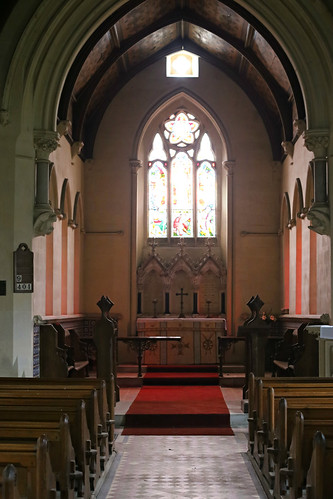 I drive gently down the A2, past Canterbury to Dover, finding a bay near the entrance, I zip round filling up the trolley and bags with stuff. I am back home at quarter to five, met by a chorus of meows from all three cats who were demanding to know where the heck I had been and where was dinner? So, I put the shopping away, feed them, and then prepare dinner, breaded pork steaks and fried potatoes. Always a good meal, lots of dirty good. We'd be better tomorrow.
I drive gently down the A2, past Canterbury to Dover, finding a bay near the entrance, I zip round filling up the trolley and bags with stuff. I am back home at quarter to five, met by a chorus of meows from all three cats who were demanding to know where the heck I had been and where was dinner? So, I put the shopping away, feed them, and then prepare dinner, breaded pork steaks and fried potatoes. Always a good meal, lots of dirty good. We'd be better tomorrow.Or not.
In the evening, there is yet more football on the wireless; Arse v Barca, would be entertaining which ever way it went. Barca played with on arm tied behind their back and still ran out 3-1 winners to go through, and leaving Mr Wenger looking very sour indeed.

2 comments:
An interesting day, it kept me busy on GSV for a good half an hour or more. I looked up Ayelsford and Google immediately informed me that it was 27hrs10mins away from my location! Your comments regarding Snodland were on the mark, possibly not the most interesting place I've GSV's lately. (I hope I don't get "hated" for saying that - especially as I am an outsider. I would imagine being your co-pilot or passenger for the day be a very interesting and fascinating day - although I don't think I'd be shooting 600+ shots in a day!
I think you would have enjoyed it, seeing the countryside rolling by and all the little villages I visited. Snodland is a n industrial town on the edge of Maidstone, it is what it is, and wasn't friendly, that there was a police car parked outside the church wasn't a good sign.
For the most part, Kent in rural and welcoming and a delight. Not least in the Jelltex house of course!
Post a Comment